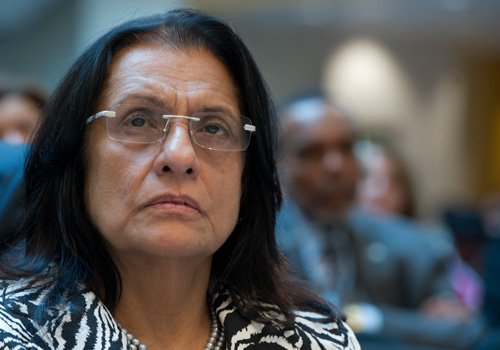Strengthening emergency preparedness can save lives in mega disasters: WHO
January 02, 2015 | Friday | News | By BioSpectrum Bureau
Strengthening emergency preparedness can save lives in mega disasters: WHO
Dr Poonam Khetrapal Singh, regional director WHO South-East Asia region
"The mega disaster of 26 December 2004, when massive tsunami waves hit six countries in the Region, causing death, destruction and devastation of unbelievable scale, put the spotlight on the need for being prepared to respond to the most unexpected disaster anywhere, anytime. Concerted efforts have since been made, and continue today, to phenomenally increase preparedness and response capacities," said Dr Poonam Khetrapal Singh, regional director WHO South-East Asia region.
WHO South-East Asia Region has developed a set of Benchmarks for Emergency Preparedness and Response which includes standards, indicators and guided questions to measure what is in place for legal frameworks, plans, finance, coordination mechanisms, community capacities, capacity development and early warning.
Member countries are using the WHO benchmarks for capacity development and assessment for risk management in the health sector.
WHO has established the South-East Asia Regional Health Emergency Fund (SEARHEF) for rapid and predictable funding of emergencies.
India, Indonesia, Maldives, Sri Lanka and Thailand continue to improve systems they set up with knowledge and tools developed through the lessons from the tsunami.
Even countries in WHO South-East Asia Region, not affected by the tsunami in 2004, are doing so, using the same knowledge.
WHO has been underscoring the importance of investing in health infrastructure that can withstand hazards and serve people in immediate need; the safety of health facilities and the readiness of health workers who treat those affected by emergencies.
Health centres and staff are critical lifelines for vulnerable people in times of disaster.
WHO has also been focusing on measuring preparedness - a sound basis for addressing risk - and identifying and addressing gaps for better emergency preparedness and response.
The WHO Benchmarks and SEARHEF, established after the 2004 tsunami and other initiatives have served well. Disasters in recent years have demonstrated the enhanced response capacities of the Member countries such as during the massive earthquake in Indonesia on 11 April, 2012, which triggered a tsunami alert, ensuring timely evacuation and appropriate community and government response with minimal loss.










